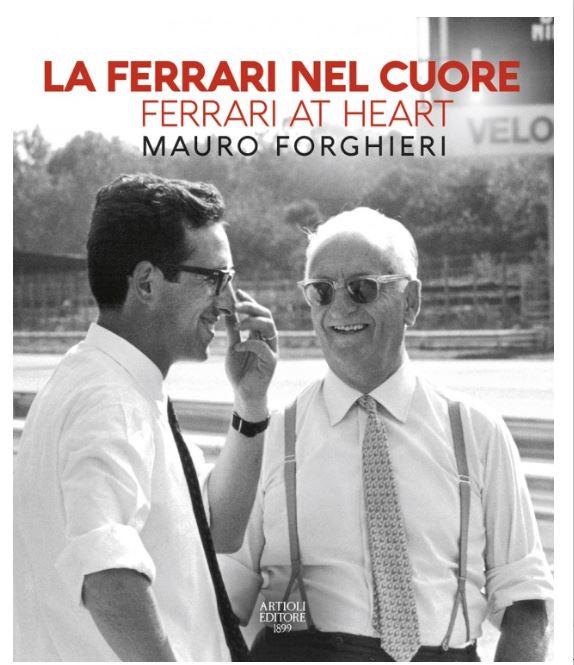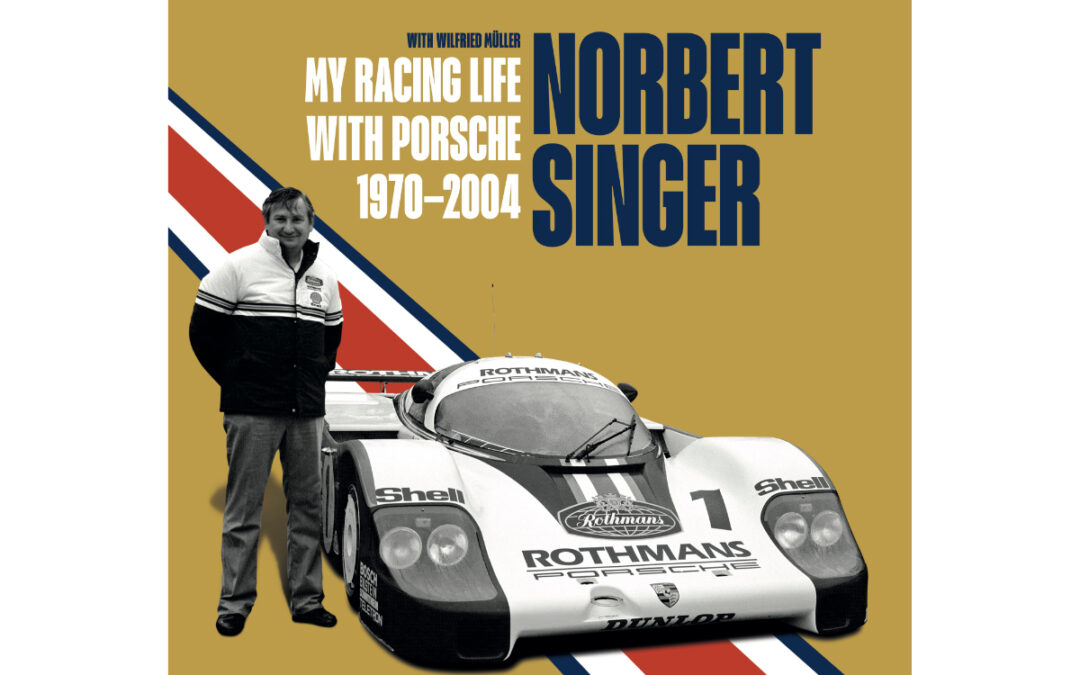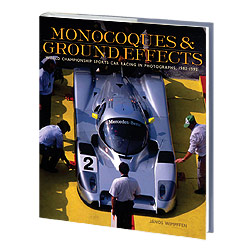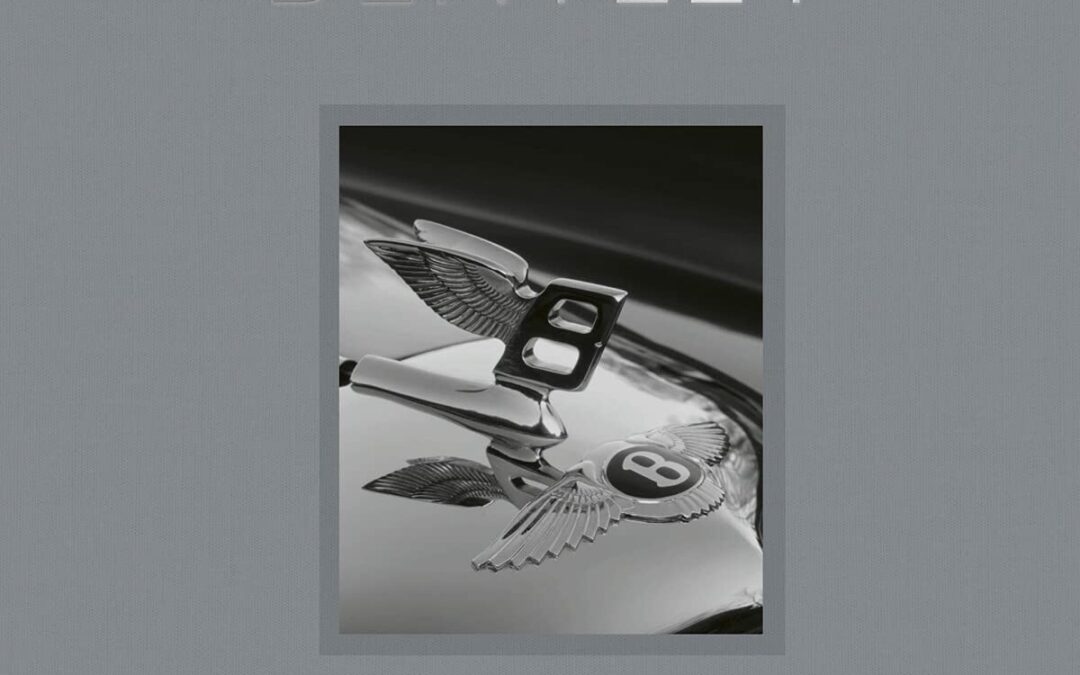
Produced in conjunction with the Bentley Drivers Club and the W.O. Bentley Memorial Foundation,100 Years of Bentley is a lavish celebration of one of the most recognised and revered car brands in history, from its earliest models right up to the modern day cars.
A six-times winner in the gruelling Le Mans 24-hour race, Bentley is also the brand behind iconic cars such as the 41/2-Litre ‘Blower’, the R-type Continental, and modern classics such as the Continental GT and Mulsanne.
Featuring more than 200 pictures, many from the club’s archives and some never seen in print before, this beautiful book details the whole history of Bentley. From W.O. Bentley’s early days as a railway engineer along with his first attempts at modifying French DFP cars, to the company’s early racing exploits, including its victories in the early Le Mans races.
Covering the Bentley brand’s revival in the 1980s and renewed impetus when it was acquired by the Volkswagen group, the story is brought up to date with the awesome new Bentleys built for the 21st century and the new era of electrification just around the corner.
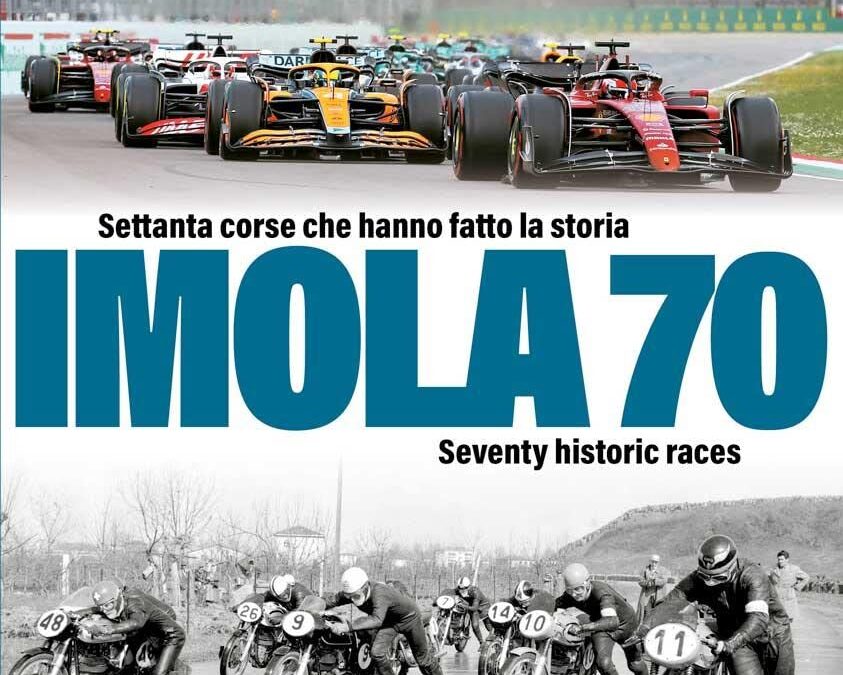
70 races, 70 days that in 70 years have marked the history of the Imola racing circuit.
From the mid-1950s, the track on the backs of the Santerno river, dedicated to Enzo and Dino Ferrari, has been one of the authentic cult attractions for the enthusiasts of motor racing on two and four wheels. The facility has seen events such as the Coppa Shell, the motorcycling 200 Miles, the 500 Kilometres reserved for covered wheel cars and, of course, the San Marino Grand Prix, part of the blue ribbon Formula 1 World Championship since the early 1980s.
Tracing the history of this fascinating circuit means reviewing the history of motorcycle and car racing at the highest levels, history featuring the greatest manufacturers, drivers and riders.
The painstakingly researched historical texts are accompanied by hundreds of black and white and colour photographs, the majority of which were previously unpublished and many drawn from the archive of photographer Franco Villani.
This commemorative book has been compiled in close collaboration with the Imola Autodromo to celebrate the circuit’s first 70 years.
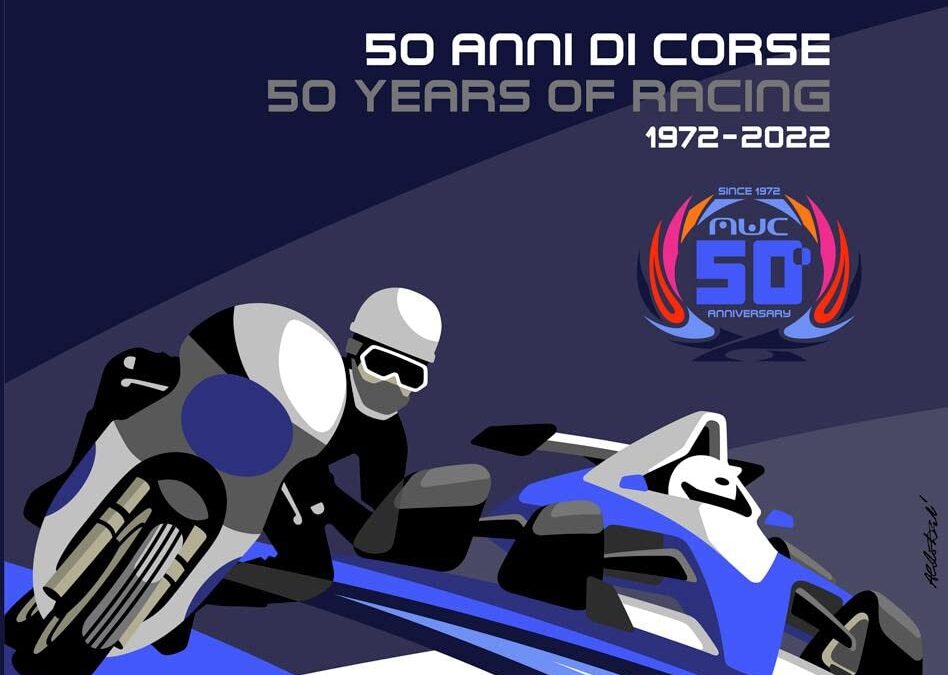
This book presents the first 50 years of the history of the Misano World Circuit “Marco Simoncelli”.
This historic track – the “Autodromo del mare” or seaside circuit – has witnessed unforgettable chapters in the history of motorsport, on two wheels and four, from the very first season in 1972 when the facility was inaugurated, through to the present day. The texts and the extraordinary photographs accompany readers along a thrilling exploration of the history of a circuit that has hosted the world’s greatest riders and drivers from every decade.
In a chronological narration that sets out from Emilia-Romagna’s Motor Valley of the early 20th century, the book describes the principal races held at the Misano circuit, from the pioneering 1970s with the unforgettable duels on two wheels involving the likes of Giacomo Agostini and Renzo Pasolini to those on four wheels featuring Italian and international drivers. Then came the 1980s, with the motorcycling World Championship arriving on the Riviera together with F.2 and F.3 single-seaters and sports prototype and GT cars. The 1990s instead heralded the Superbike championship and the Super Turismo touring cars. The new millennium has seen the circuit develop into an avant-garde facility on all fronts, capable of hosting international events and prestigious collateral events.
The volume is edited by Marco Montemaggi, coordinator and author of numerous books on Italian industrial culture and, in the motor industry, former director of the Ducati Museum and former scientific curator of the Motor Valley project. A scientific committee made up of highly experienced authors and personalities such as Andrea Albani, Davide Bagnaresi, Marco Masetti, Luigi Rivola and Sergio Remondino contributed with passion to the creation of the volume, assisted by many of the protagonists of Italian motorsport, always close to the Misano World Circuit.
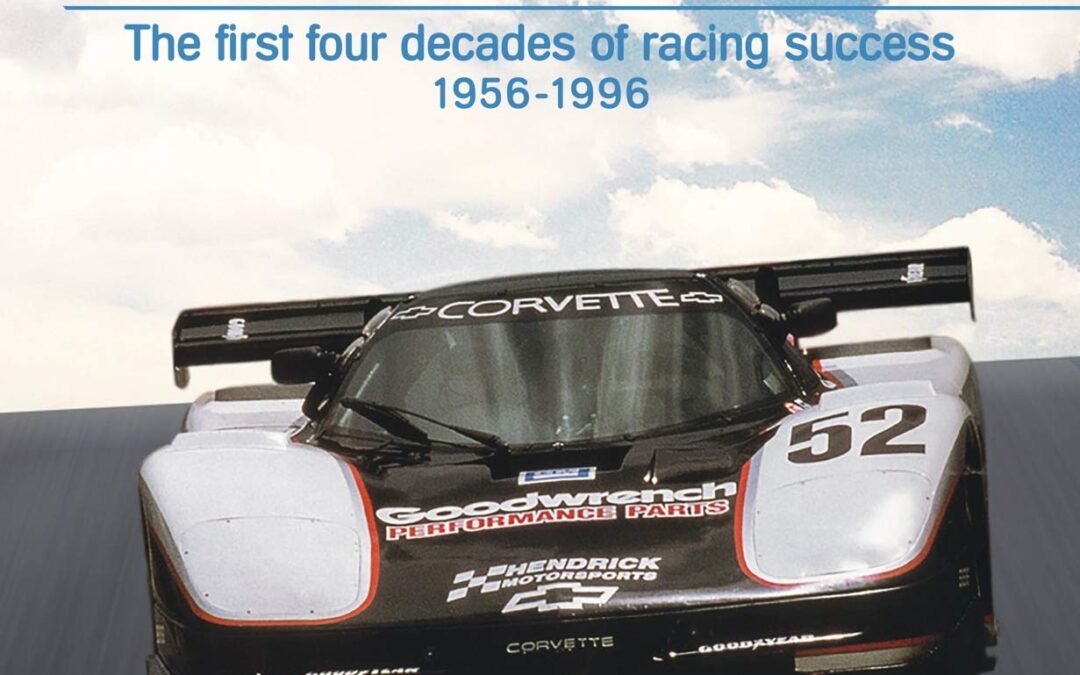
This revised reprint of a classic title covers the history and development of the racing Corvettes, from the car’s beginnings in the 1950s with just 250 horsepower, through the Corvette GTP of the 1980s, with over 1000 horsepower, and on to 1996, when 4th generation cars give way to the 5th generation.
Included are many interviews with the drivers who raced these exciting, weighty and always fast cars, including John Greenwood, Dick Gulstrand, Jerry Grant and ‘Fast’ Phil Curring, amongst others. The book is illustrated with many quality photographs, supplied by General Motors and well-known motoring photographers; it also contains detailed specifications of the production cars, and road test reports
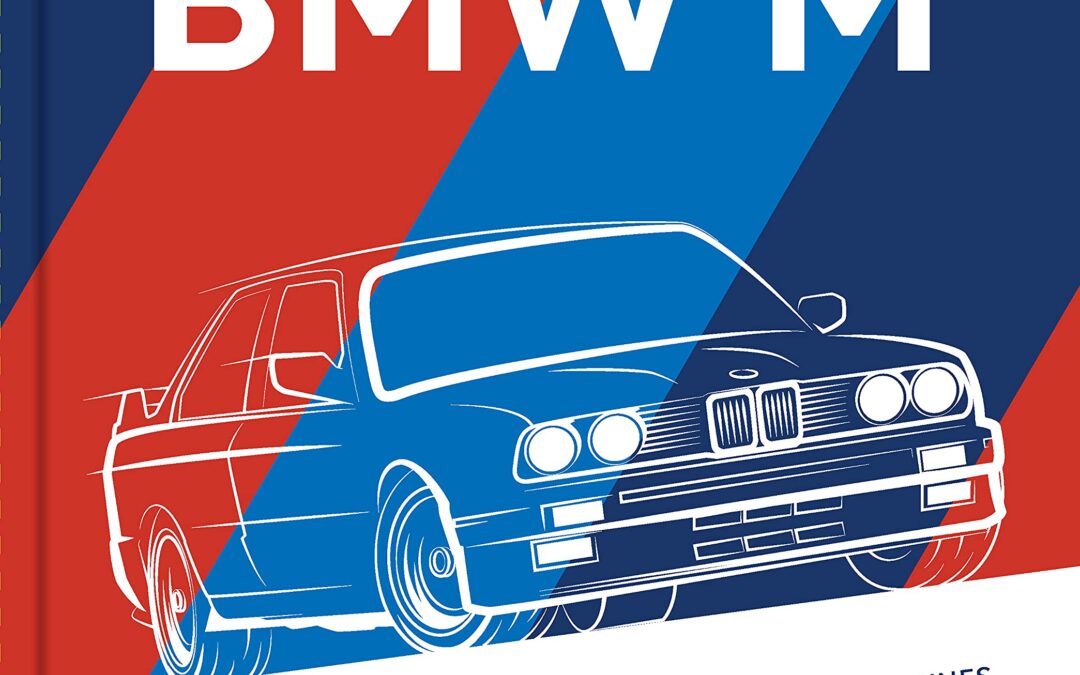
BMW M-Series celebrates the 50th anniversary of these legendary German performance cars, detailing both its production and motorsport stories with expert commentary and fascinating photography.
BMW launched the Motorsport, or “M”, division in 1972 to formally support its growing and successful racing program. Wisely, BMW leveraged that racing credibility to create limited-edition, high-performance production cars, the first being the M1 supercar of 1978. Tested and tuned at a dedicated facility located at the legendary Nürburgring, BMW’s M cars are true “driver’s cars” focused first and foremost on handling and performance. Still, they are docile enough when not driven aggressively to serve as comfortable high-end daily drivers.
Since the late 1980s, the range of M models has broadened considerably and now includes coupes, convertibles, and sedans in M2, M3, M4, M5, and M8 flavors along with high-performance X-series M SUVs. Early M cars like the M1 and late 1980s M3 and M6 are now desirable collector cars welcomed at top collector auctions and commanding premium prices.
With decades of racing and production success and, literally, no signs of slowing down, BMW’s M cars hurtle full speed to their 50th anniversary in 2022. BMW M offers the history no Bimmer fan will want to be without.
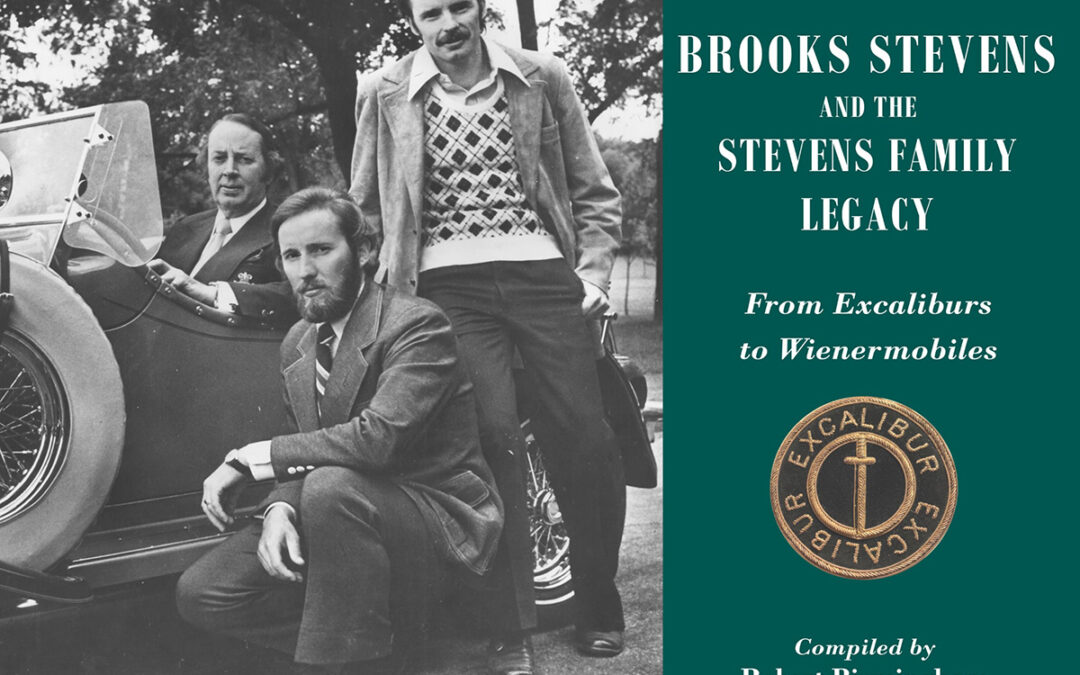
Over the years, Brooks Stevens’ amazing career as an innovative industrial designer has been recorded in countless articles and several books but now, for the first time, a comprehensive record of his love for automobiles is defined in Brooks Stevens and the Stevens Family Legacy – From Excaliburs to Wienermobiles.
Brooks’ sons, David and William “Steve” Stevens, played key roles from the mid-1960s through the 1980s and yet a great many people are unaware of their invaluable contributions, which are presented between these pages.
From his first car, a Ford Model T given to him by his father as a reward for accomplishing a challenge, Brooks and his associates designed a series of special vehicles commissioned by Studebaker and Kaiser Frazer, by wealthy industrials, entertainment stars, and friends. The first Excalibur J cars went on to win an SCCA National Championship in 1958, a series of passenger cars derived from the original 1964 Mercebaker, soon after to be renamed the Excalibur SS, and the infamous Oscar Mayer Wienermobiles.
Celebrities come and go throughout this history: entertainers Jackie Gleason and Phyllis Diller, successful race drivers Al Unser, Jr., Jim Jeffords, John Fitch, Jerry Hansen, Carl Haas, Fred Wacker, and Roger Penske, “father” of the Corvette Zora Arkus-Duntov, and also designer/constructors “Dutch” Darrin and John DeLorean are included. Prominent Milwaukee and Wisconsin socialites, industrialists, and business leaders are also present: William Woods Plankinton, Fred Miller, Fred Stratton, Sr., Dan Parker, Ralph Evinrude, and David Uihlein, to name but a few.
Color renderings designed to improve Road America’s facility during the early years and experiences at Le Mans, Sebring, and American sports car tracks from Watkins Glen in New York to Sears Point in California and dozens of others in between are interesting. Excalibur race results are recorded by date.
There is much more of interest for even the occasional classic automobile buff, including the history, from its roots in earlier buildings, to opening night of the Brooks Stevens Automotive Museum in Mequon, Wisconsin, right on up to its eventual closing.
Full color with dozens of photos.
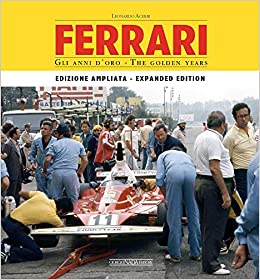
Ferrari’s sporting history, from the origins to 1988, the year of Enzo Ferrari’s death, narrated in 400 pages and more than 700 photos, most of which previously unpublished and drawn from the publisher’s own archive. More than a book, Ferrari The Golden Years this is a unique and prestigious document that reviews year by year, from 1947 to 1988, the true sporting epic of Ferrari’s Ferrari. Page by page, we find champions of the calibre of Tazio Nuvolari, Alberto Ascari, John Surtees, Niki Lauda, Gilles Villeneuve and many others, who in Formula 1 and elsewhere won world titles at the wheel of unforgettable cars such as the 500 F2, the 158 F1, the Testa Rossa, the 250 GTO, the 330 P4 and the successful 312 T family, from the 1950s through to the late 1980s. This new enlarged edition includes not only champion drivers, but also the men and the mechanics who lived in close contact with the Drake. They are described in specific text boxes: from Romolo Tavoni to Mauro Forghieri, from Franco Gozzi to Marco Piccinini, from Ermanno Cuoghi to Giulio Borsari. All accompanied by contextual texts by Leonardo Acerbi, a Ferrari historian of great experience. The book contains a unique collection of images, many in black and white but also a series of very rare colour shots, the majority by Franco Villani, a great reporter long associated with the Prancing Horse. An album allowing us to relive one of the greatest sporting stories of all time.
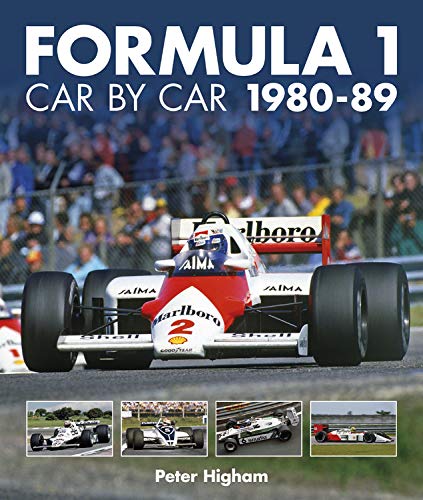
This book is the third in Evro’s multi-volume, decade-by-decade series covering the entire history of Formula 1 through its teams and cars. This installment examines the 1980s, when the sport moved into its spectacular turbo era, first with Renault, Ferrari and BMW-powered Brabham, then with sustained periods of success for McLaren with Porsche-made TAG engines and Williams with Honda power. After the last win for the evergreen Ford Cosworth DFV in 1983, turbos prevailed until regulation change for 1989 brought back normally aspirated engines, now of 3.5 litres. Besides Formula 1’s high achievers, this book also covers the entire supporting cast, where much curiosity lies in discovering the travails of obscure and unsuccessful cars. This wide-ranging, colorful and authoritative book will be treasured by all Formula 1 fans.
- Year-by-year treatment covers each season in fascinating depth, running through the teams — and their various cars — in order of importance.
- Two teams dominated the decade, McLaren and Williams taking all but two of the drivers’ and constructors’ titles: McLaren’s World Champions were Niki Lauda (1984), Alain Prost (1985, 1986 and 1989) and Ayrton Senna (1988), while Williams’s were Alan Jones (1980), Keke Rosberg (1982) and Nelson Piquet (1987).
- The two other significant winning teams were Brabham, which took Nelson Piquet to two drivers’ titles (1981 and 1983), and Ferrari, which won two constructors’ titles (1982 and 1983).
- Other winning marques were Benetton, Ligier, Lotus, Renault and Tyrrell.
- Over 600 photos — entirely in color and all from the magnificent archives of LAT Images — show every type of car raced by every team and driver, presenting a comprehensive survey of all participants.
- The sweep of the decade covers sustained technical advances, particularly in carbon-fiber construction and ever-increasing power outputs.
- Detailed text includes car specifications and technical essentials.
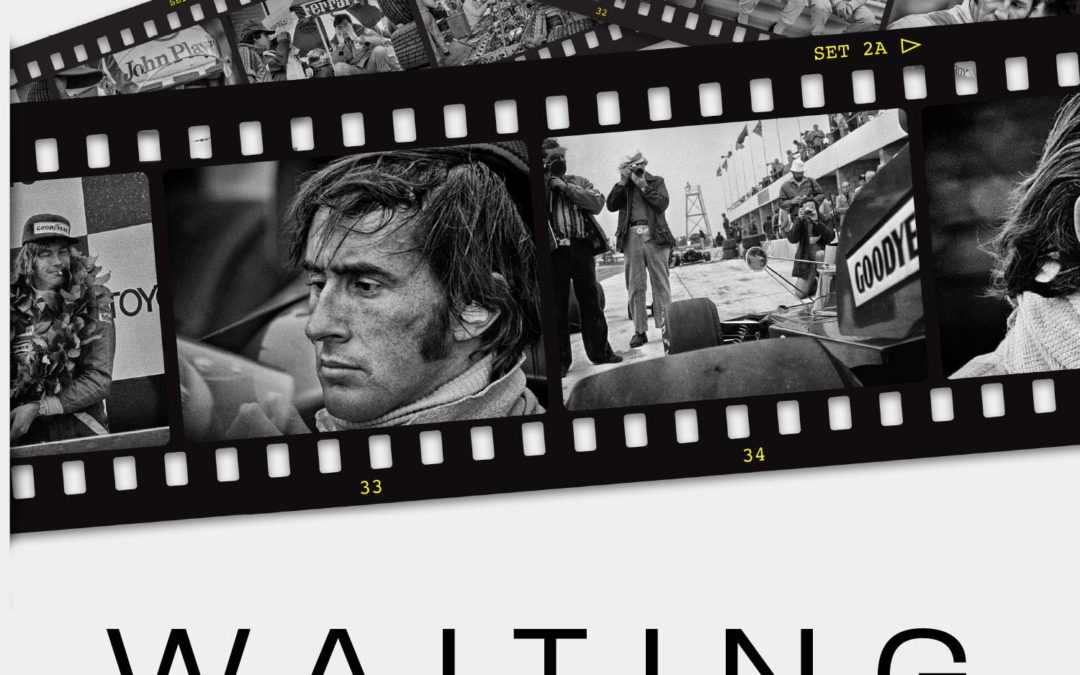
Waiting is the story of a rookie photojournalist immersed in Formula One’s golden age of the 1970s and 1980s. Aged just 19, Richard Kelley saw the need to faithfully document the sport’s lethal dangers, iconic personalities, and technological developments in a period of seismic change, which caused F1’s unique character to disappear forever. After only nine months of photographic education, Kelley began using his remarkable talent to observe and capture F1 drivers’ decisive moments. He sought his images as a fly on the wall, consciously disappearing among this band of brothers to allow the emotion and power of the moment to blend, developing a cinematic style that grows more contemporary every year. Waiting is a powerful and unique documentary of the world of F1 from 1972 through to 1984. From Gilles Villeneuve’s first moments with Ferrari to Francois Cevert’s final morning and Niki Lauda’s resurrection, Kelley’s omnipresent lens and enlightening memoir capture an intimacy and humanity that Grand Prix history will never again witness.
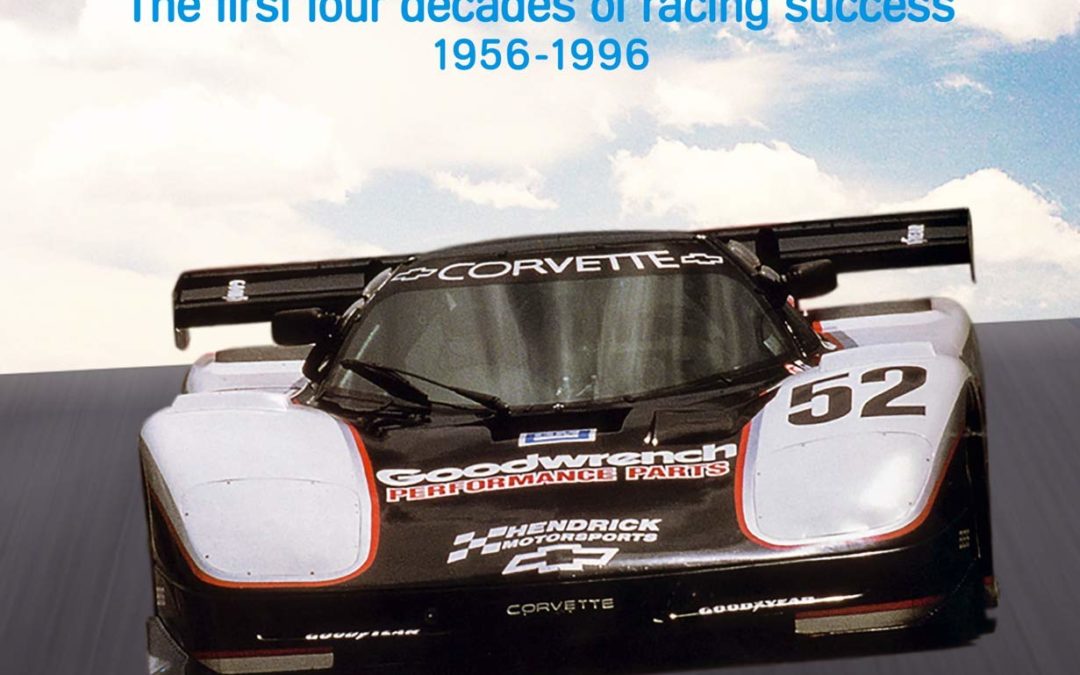
This new updated edition of
Chevrolet Corvette covers the history and development of the racing Corvettes, from the car’s beginnings in the 1950s with just 250 horsepower, through the Corvette GTP of the 1980s, with over 1000 horsepower, and on to 1996, when 4th generation cars give way to the 5th generation.
Included are many interviews with the drivers who raced these exciting, weighty and always fast cars, including John Greenwood, Dick Gulstrand, Jerry Grant and ‘Fast’ Phil Curring, among others.
The book is illustrated with many quality photographs, supplied by General Motors and well-known motoring photographers; it also contains detailed specifications of the production cars, and road test reports.
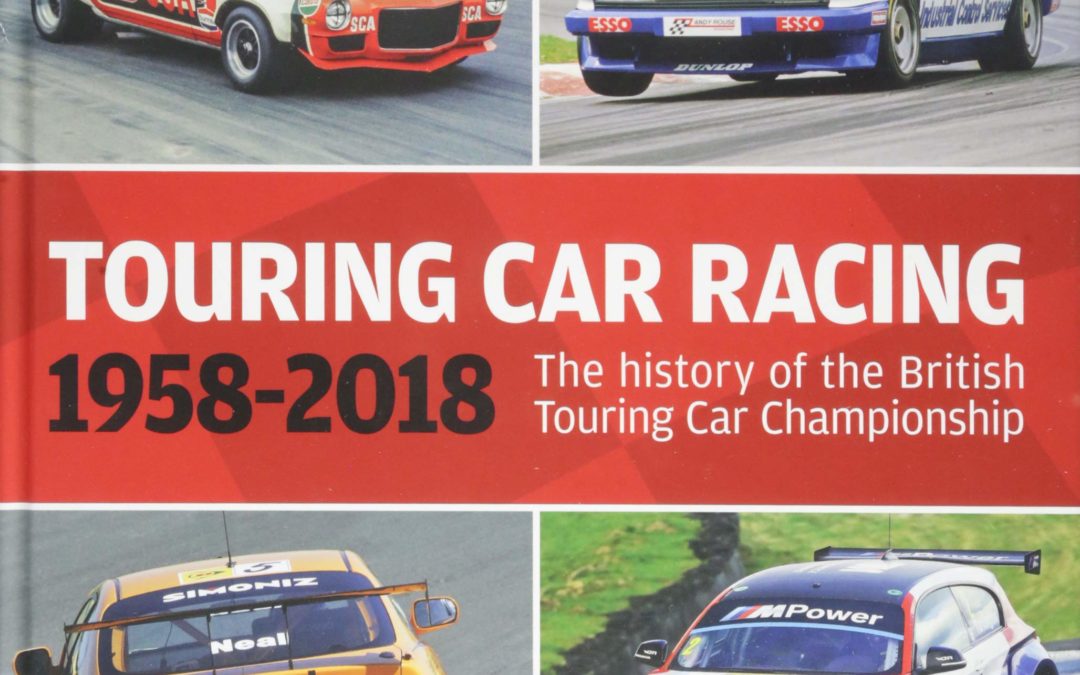
Touring Car Racing, a feast of nostalgia, celebrates the 60-year heritage of the British Touring Car Championship. From the era of Mini Coopers and Lotus Cortinas to the Vauxhall Astras and Honda Civics of recent years, all the highlights of Britain’s ever-spectacular touring car scene are captured in a year-by-year visual extravaganza with over 600 photos and expert commentary. Compiled by long-time touring car journalist Matt James, the book has a chapter for each year featuring a summary of the season, 10 photos showing all the top cars and drivers in action, key statistics and a profile of the champion driver. Anyone who has ever enjoyed touring car racing as a participant, spectator or television viewer will treasure this book.
- The 1950s. The British Saloon Car Championship was inaugurated in 1958 and from the start it was super-competitive, ending in a tie that was resolved by a shoot-out in favour of Jack Sears.
- The 1960s. There were three Mini champions but mainly this was a Ford era, epitomised by Lotus Cortinas (with Jim Clark ever spectacular) and big Falcons, Galaxies and Mustangs from America.
- The 1970s. Smaller classes came to the fore in this decade, with three drivers sharing seven titles — Bill McGovern took three in Sunbeam Imps while two apiece went to Bernard Unett (Chrysler Avenger GT) and Richard Longman (Mini 1275GT).
- The 1980s. Three drivers also bestrode this decade but in a wider range of cars, including Mazda RX-7, Alfa Romeo GTV, Rover Vitesse and Ford Sierra XR4i; Win Percy and Andy Rouse each took three titles, Chris Hodgetts two.
- The 1990s. Overseas drivers arrived in force to mix it with home-grown stars during the highly competitive Super Touring years, the decade’s champions including Joachim Winkelhock (BMW
- 318is), Frank Biela (Audi A4 quattro), Alain Menu (Renault Laguna), Rickard Rydell (Volvo S40) and Laurent Aïello (Nissan Primera).
- The 2000s. Vauxhalls were the star cars, taking six titles, while the decade brought three double champions in the form of James Thompson (Vauxhall Astra), Matt Neal (Honda Integra) and Fabrizio Giovanardi (Vauxhall Vectra VXR).
- The 2010s. Yet more variety and brilliant racing has characterised the current decade, with Gordon Shedden becoming the winningest driver with three titles in Honda Civics.
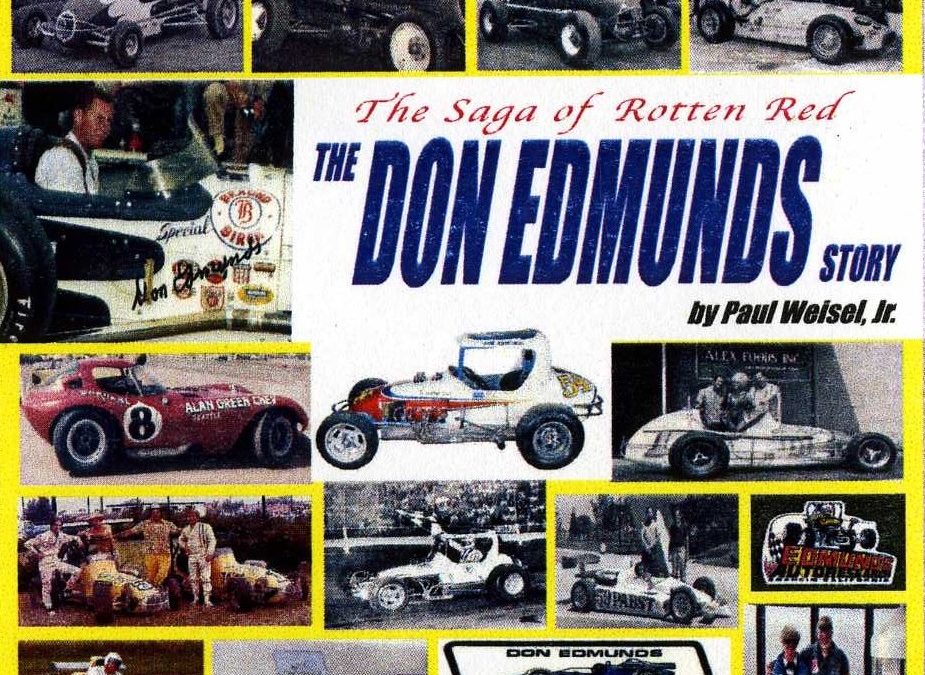
Many people remember Don Edmunds as the premier builder of open wheel race cars during the 1960s, 1970s, and into the early 1980s, but the Don Edmunds story isn’t just about iconic midgets and sprint cars. Don was a true innovator, whose cars combined art and performance and were always at the forefront of open cockpit safety and design, but few readers realize Don Edmunds touched so many parts of the racing world and beyond. Author, Paul Weisel, Jr., has partnered with Don to tell the Edmunds story in a new 182-page book, complete with more than 200 photos, titled, ‘The Saga of Rotten Red – The Don Edmunds Story’.
From his childhood in Anaheim, CA, his teenage years as a part of the southern California roadster scene, including appearances at El Mirage and Bonneville, his first oval track exposure racing jalopies with the California Jalopy Assn., to his graduation to the midgets of the United Racing Assn., the book chronicles Edmunds’ journey toward his greatest racing triumph, qualifying for the 1957 Indianapolis ‘500’ and subsequently being named ‘Rookie of the Year’ at Indy. Along the way Don learned the ropes from car owner, Doug Caruthers, paid attention to tips by drivers, Billy Cantrell, Edgar Elder, and others, worked with Eddie Kuzma, fabricating race cars for Indy and the championship trail, and had his moniker of ‘Red’ transformed forever to ‘Rotten Red’, a tag he has always embraced. Even today, Don signs all his e-mails with ‘RR’. Don types the letters with a grin and all his friends smile when they read to the end of the message.
After Indianapolis 1959 Don retired from driving championship cars and returned to Anaheim to enjoy married life and to pursue his plans to eventually open his own race car shop. Stints with Bill Devin, Bill Stroppe, and Bill Thomas culminated with Don’s design and fabrication of the prototype of the Cheetah sports car and gave Don the practical experience he needed to open Don Edmunds’ Autoresearch in 1964.
Three separate shots at Indianapolis as a car builder and literally hundreds of midgets, sprint cars, supermodifieds, and super vees later, Don Edmunds replaced Frank Kurtis as the country’s most prolific designer and builder of open wheel race cars. Don Edmunds was on the cutting edge of open wheel race car design and later enjoyed a superb career driving supermodifieds, including a junket to compete with cars of his own design in South Africa. In 1991, Don Edmunds was inducted into the National Sprint Car Hall of Fame and in 1994, the National Midget Hall of Fame, two awards he holds in the highest regard.
Away from the track Autoresearch designed and built Evel Knievel’s X-1 Skycycle, the prototype vehicle the stuntman would use to jump the Snake River Canyon in Idaho. Don also became involved in the restoration of several significant 1930-era race cars and used his ‘retirement’ to produce dozens of stunning scale model race cars. Author Paul Weisel takes the reader on all of Edmunds’ adventures and provides insight into the thought process of one of the true ‘dreamers of the day’.
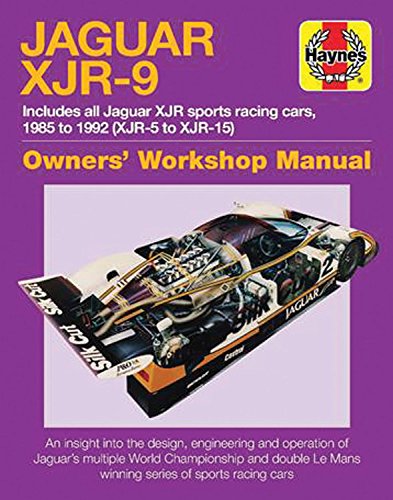
The Jaguar XJR-9 is the Group C sports racing car built by Jaguar for the 1988 racing season, winning on its debut at the Daytona 24 Hours, and going on to take victory at the Le Mans 24 Hours (Jaguar’s first win at the French classic since 1957).
The car also took Jaguar to victory in the 1988 Teams’ World Championship, and Drivers’ World Championship with Martin Brundle. Works cars ran in the American IMSA Championship (running in Castrol livery), as well as the World Sports Car Championship. The XJR-9 is one of the most evocative sports-racing cars of the 1980s, thanks to its success, instantly recognizable Silk Cut livery, and unforgettable V12 engine note.
This Manual tells the complete design and engineering story of the XJR series of sports-racing cars, focusing on the XJR-9, and featuring extensive input from many of the engineers and drivers involved.
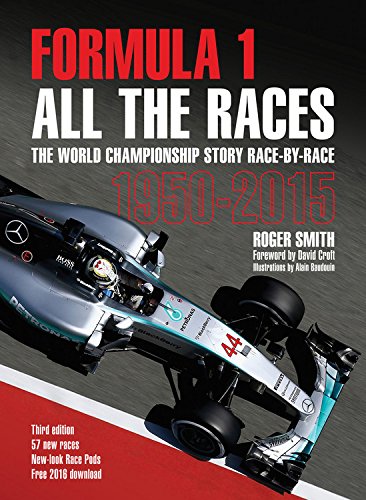
SOLD OUT
This remarkable book is the third edition of an acclaimed work of reference about Formula 1. It has been meticulously researched and written to capture the character and essence of every one of the 935 World Championship races held from the beginning of Formula 1 in 1950 to the end of the 2015 season. Each entry highlights the key events of each Grand Prix from qualifying through to the final outcome as well as spotlighting those incidental happenings so unique to F1 that influenced a race or an unfolding championship battle. Nothing is missed in this unique book of record.
Fully updated three years since publication of the sell-out previous edition.
Each race entry is packed with information, comprising a descriptive text supported by numerous statistics.
935 races, 206 winning cars, 105 winning drivers, 66 seasons, 32 champions.
All race-winning cars illustrated with high-quality artwork by Alain Baudouin.
Decade-by-decade structure: the 1950s (Red to green); the 1960s (From strength to strength), the 1970s (Television stardom), the 1980s (Bernie’s travelling circus), the 1990s (Going global), the 2000s (Front-page news), the 2010s (Money talks).
Appendices give overview listings, including World Champion drivers, World Champion constructors, total wins for drivers and constructors, etc.
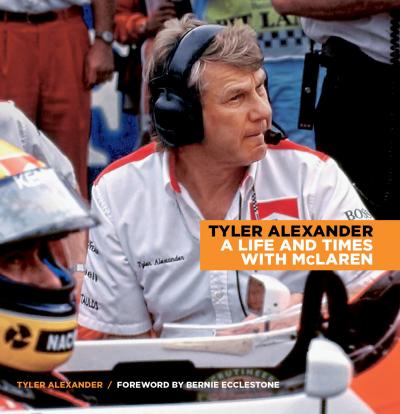
“Bruce McLaren. Denny Hulme. Peter Revson. Johnny Rutherford. Mario Andretti. Niki Lauda. Ayrton Senna. Lewis Hamilton. Tyler Alexander has worked with some of the greatest drivers in racing history, as well as such influential figures as Roger Penske, Bernie Ecclestone, Carl Haas, Paul Newman, and Adrian Newey.
In A Life and Times with McLaren, Tyler Alexander tells the story of his remarkable four-decade career. In 1964 he helped found the McLaren racing team along with Bruce McLaren and Teddy Mayer. As a mechanic, engineer, and team manager, Alexander played a key role in the development of McLaren’s cars and the team’s early successes in Formula One, the Indianapolis 500, and the Can-Am series.
After scoring Indianapolis 500 victories with driver Johnny Rutherford in 1974 and 1976, Alexander left McLaren in the early 1980s to join the new Mayer Motor Racing team. A decade later he returned to McLaren—in time to participate in the team’s run of success in the late 1990s with drivers Mika Hakkinen and Kimi Raikkonen. In 2008, his final year with the team saw McLaren score its most recent Formula One championship with brilliant newcomer Lewis Hamilton.
A Life and Times with McLaren tells what it was like to work with some of the greatest names in motorsport, and reveals the technical ingenuity, hard work, and luck required to sustain a successful team. The book is fully illustrated with hundreds of photographs, and includes testimonials and contributions from old friends like Mario Andretti, Roger Penske, and Jackie Stewart.
Bruce McLaren and the racing team he created have been the subject of many books, but none told in such detail from the inside. Required reading for McLaren fans, the book also covers Alexander’s years with other teams, such as Mayer Motor Racing, Carl Haas’s FORCE F1 team, and Newman/Haas Racing.
Universally respected within the racing community for his experience, work ethic, and honesty, Tyler Alexander deserves to be better known to a wider audience of fans. In A Life and Times with McLaren, Tyler tells his own story in his own unique style.
“
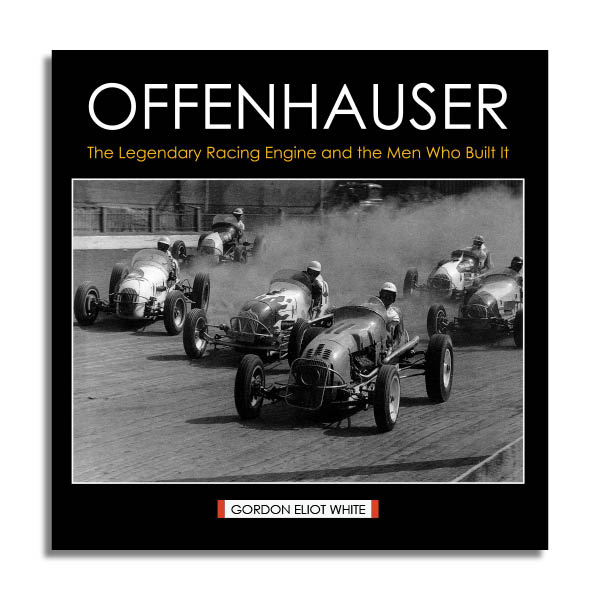
Domination. No other word so accurately describes the Offenhauser engine’s six-decade reign over American auto racing. On small urban tracks, state fair dirt circuits, and Indy’s brick oval, “Offy” was synonymous with “winner circle.”
At the height of its power in the 1950s, entire Indy grids were composed of Offenhauser-powered roadsters. Neither the rear-engined revolution of the mid-1960s nor the entry of major players like Ford would knock Offy from its throne. When the “little four with the big punch” finally ceased being competitive in the early 1980s, it was a victim of the rule book more than any engineering shortcoming.
Offenhauser: The Legendary Racing Engine and the Men Who Built It traces the glorious history of the most renowned American racing engine of all time. Author Gordon Eliot White has thoroughly researched this story from the early days of Harry Miller, through Fred Offenhauser, to the final days under Meyer & Drake ownership. More than 250 historical black-and-white photographs and a special color section accompany White’s fascinating narrative. With over 18,000 copies sold, this book tells the definitive story of the designers, machinists, and drivers who created the Offenhauser legend. Essential reading for the racing historian and fan, White’s book captures the human, technical, and political aspects of Offenhauser’s unforgettable story.

The Golden Age of Top Fuel, Funny Cars, Door Slammers & More
Spanning the 1950s through the 1980s, 1001 Drag Racing Facts is packed with well-researched drag racing facts that even some of the most hard-core drag racing fans might be surprised to learn. Covered are all the popular classes of racing of the era, including Top Fuelers, Funny Cars, Pro Stocks, Eliminators such as Gassers and Altereds, Stocks, Super Stocks, and more. Fans of these legendary cars will appreciate the technical and entertaining information shared on every page about all of the great cars, teams, drivers, and classes.







